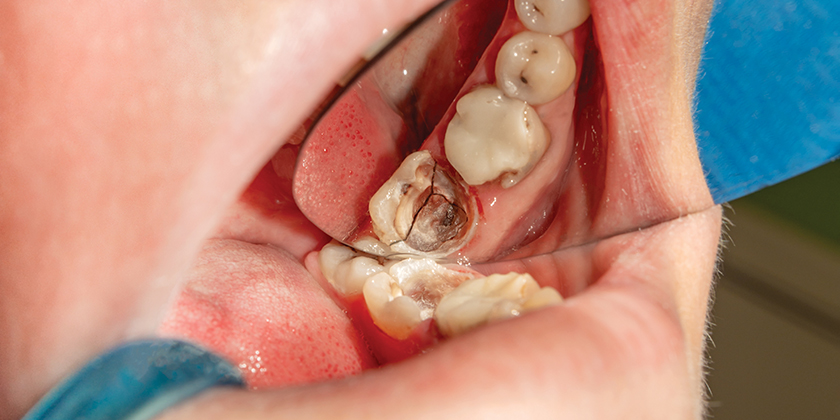Many dental patients dislike a tooth fracture more than a six year old dislikes injection prescriptions. However, in all dentistry practices tooth fractures are hard to avoid. They happen to all age groups although the 25 to 50 demographic stand out as the most susceptible group. Fractures can be hard to diagnose and are normally painful but very easy to treat. Here is a short list of the kinds of tooth fracture you can expect to find.
Oblique Supragingival Fracture
This first kind of tooth fracture is found above the gums and takes place when you bite down too vigorously. The better part is that this type of fracture normally does not affect the nerves and the pain also goes away straight off when the fractured part of the tooth becomes detached. It is very easy for a dentist to repair but the exposed area of the tooth can be sore. On the other hand, you may want a crown to put a stop to more fractures from taking place in that tooth if the fracture is large enough.
Oblique Subgingival Fracture
A fracture of this kind occurs far below the gum line. The fractured tooth persists in causing intense pain until you get it removed. The pain is normally because the fractured section of the tooth usually remains present in the gums after it comes off. Fortunately, it does not normally affect the nerves, but it may bring the demand for a root canal for cleaning out the tooth before you get a crown put in. Depending on how far it has gone past the gum line, the oblique subgingival fracture varies in severity. However, a regular checkup with your dentist is recommended because the crack can be present for many years before you start to feel any pain.
Oblique Root Fracture
This type of fracture does not involve a tooth crown. It is most commonly found below the gums, specifically under the bone. In other instances, it may occur near the crown of your tooth and when it does, it is almost always fatal. This is one of the unpleasant scenarios for both the dentist and the patient. You can attempt to save the tooth with a root canal; still, you will not usually be successful. The tooth will usually be lost later due to the abscess of the bone.
Vertical Apical Root Fracture
This is the last type of tooth fracture and it occurs in the tip of the root and is normally the most painful kind of fracture, even if you have had the nerve removed with a root canal. The vertical apical root fractures causes pain as a result of fragments putting pressure on the bone which strains the fragment pieces, causing intense pain. The only way to fix this fracture is to get a root canal. This will generally help ease the pain and remove the dead part of your tooth that was affected with the fracture.
You should consult an experienced dental surgeon, such as Dr. Alex Rubinov, as tooth fractures needs careful handling to ensure you suffer the minimum amount of distress and pain as possible. Contact us at (718) 253-0800 to schedule an appointment.


